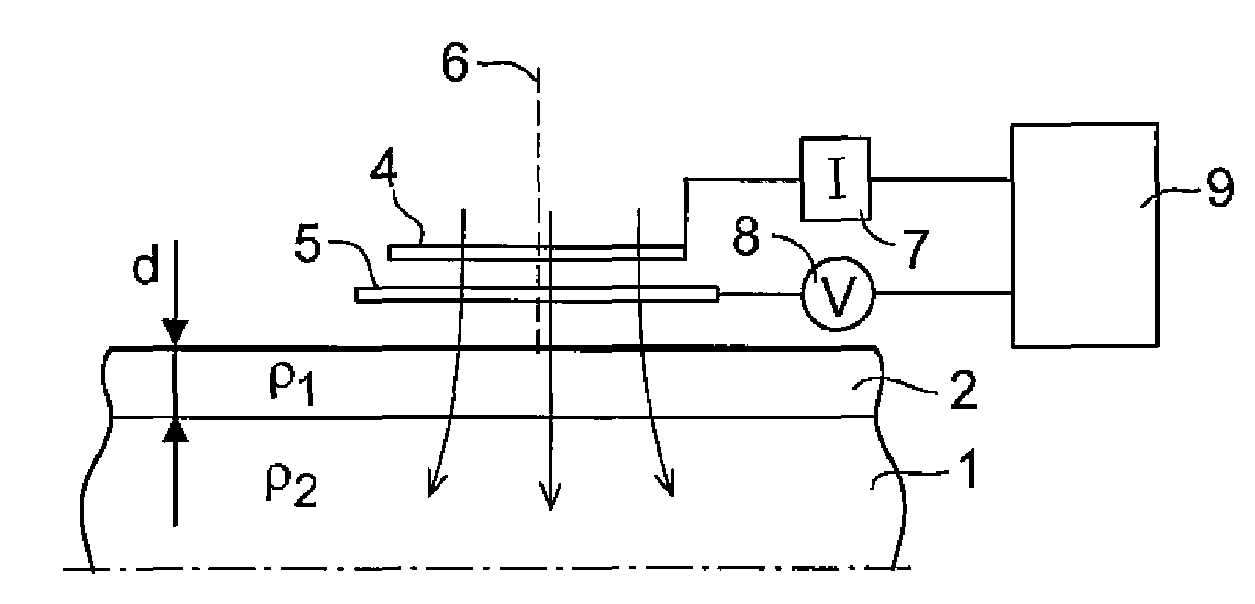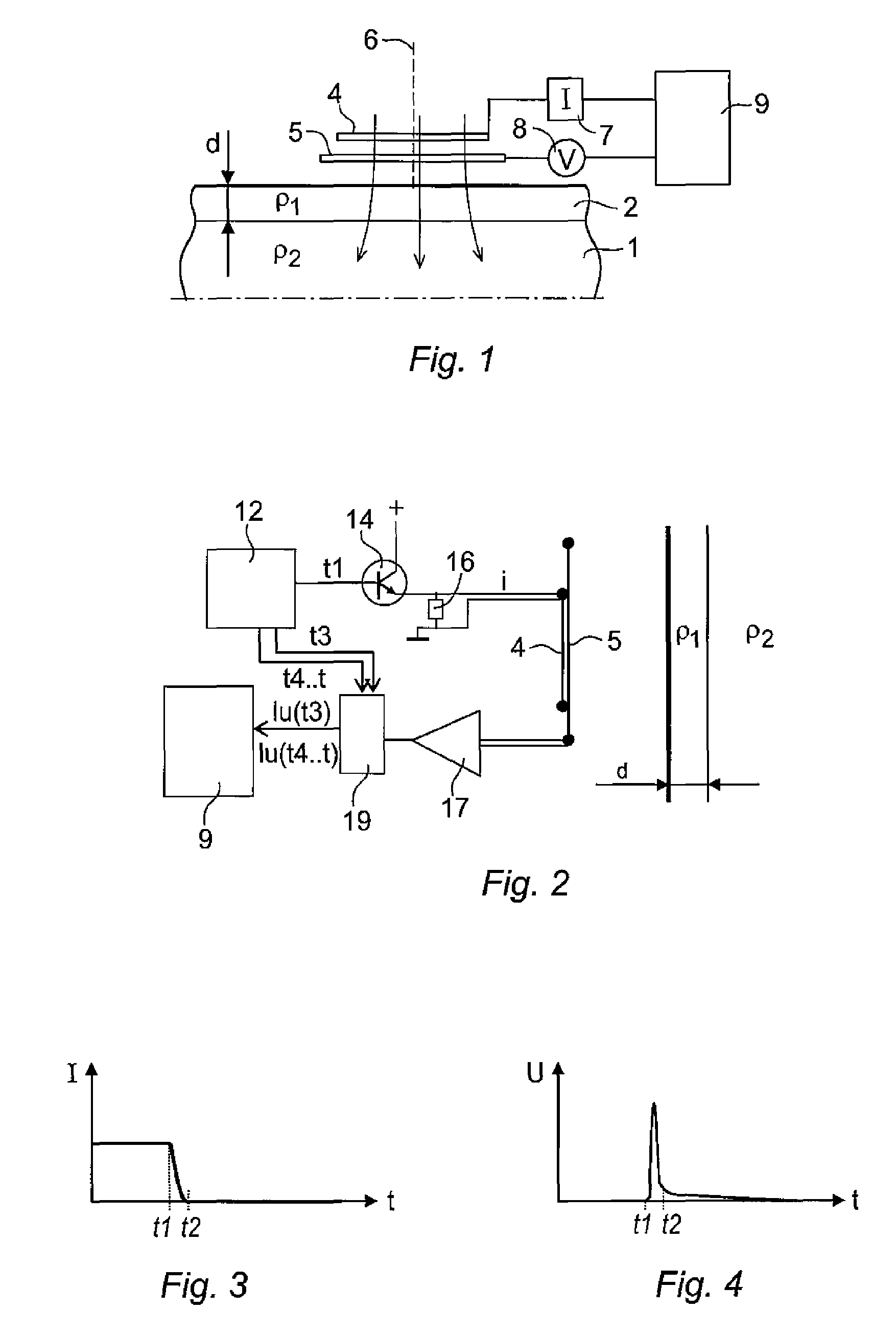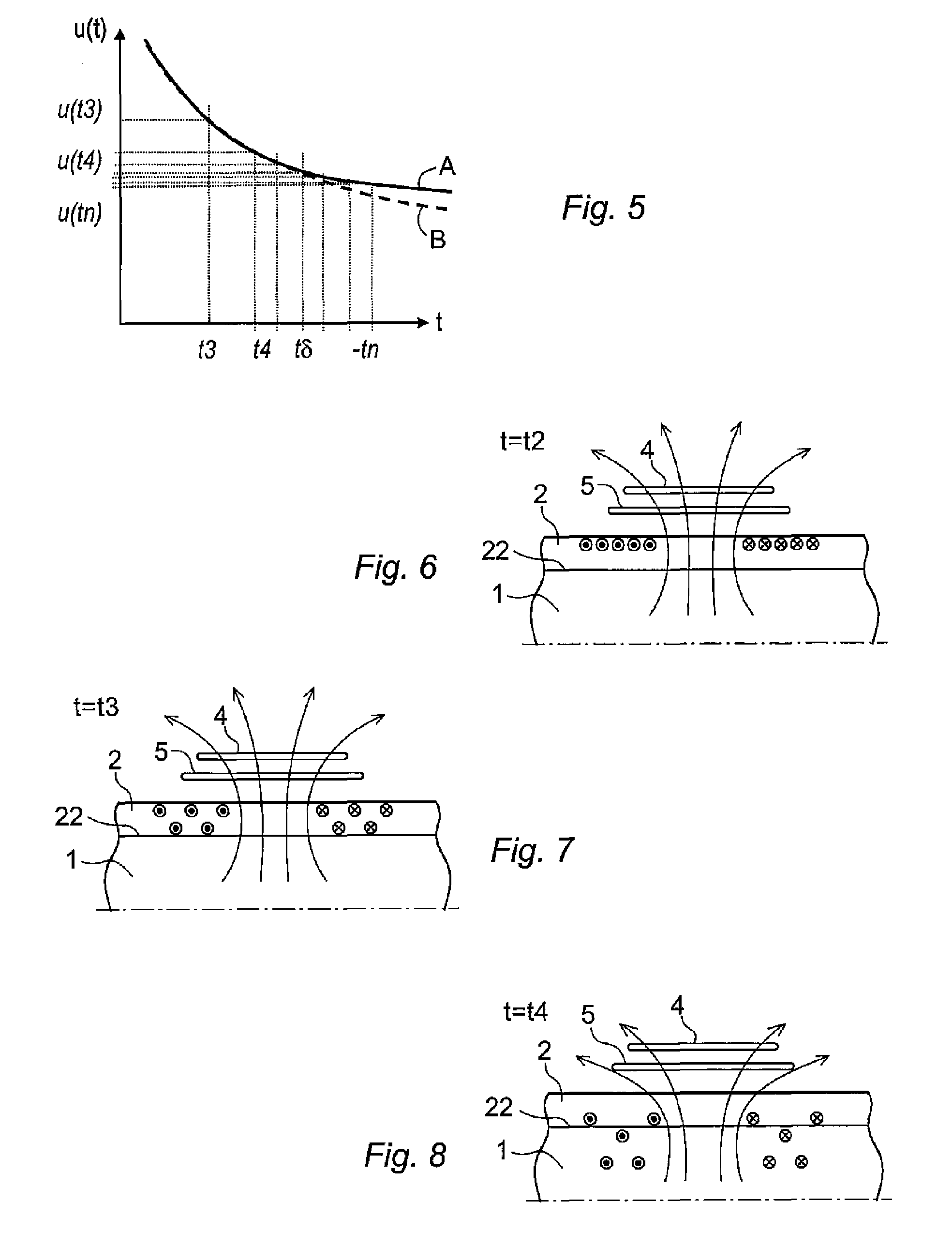Method and apparatus for measuring the thickness of a metal layer provided on a metal object
a metal object and thickness technology, applied in the direction of magnetic measurement, electric/magnetic measuring arrangement, instruments, etc., to achieve the effect of easy detection
- Summary
- Abstract
- Description
- Claims
- Application Information
AI Technical Summary
Benefits of technology
Problems solved by technology
Method used
Image
Examples
Embodiment Construction
[0036]FIG. 1 shows and apparatus for measuring the thickness of a metal layer 2 on a metal object 1 according to an embodiment of the invention. The object 1 is made of metal or a metal alloy and is provided with a layer 2 of a metal or a metal alloy having a resistivity that differs from the resistivity of the object. The layer is thin compared with the thickness of the object. The layer is, for example, between 0.1 mm and 1 mm. The object 1 is, for example, a sheet and the layer can be provided on one side or both sides of the sheet. The thickness d of the layer 2 is to be measured.
[0037]The apparatus comprises a first device arranged to generate a magnetic field and positioned close to the metal layer. The first device includes a coil 4, in the following called a sending coil, and current supply means 7 for supplying a current to the sending coil 4. The first device is arranged to generate a magnetic field and a sudden variation of the magnetic field so that a current is induced ...
PUM
 Login to View More
Login to View More Abstract
Description
Claims
Application Information
 Login to View More
Login to View More - R&D
- Intellectual Property
- Life Sciences
- Materials
- Tech Scout
- Unparalleled Data Quality
- Higher Quality Content
- 60% Fewer Hallucinations
Browse by: Latest US Patents, China's latest patents, Technical Efficacy Thesaurus, Application Domain, Technology Topic, Popular Technical Reports.
© 2025 PatSnap. All rights reserved.Legal|Privacy policy|Modern Slavery Act Transparency Statement|Sitemap|About US| Contact US: help@patsnap.com



